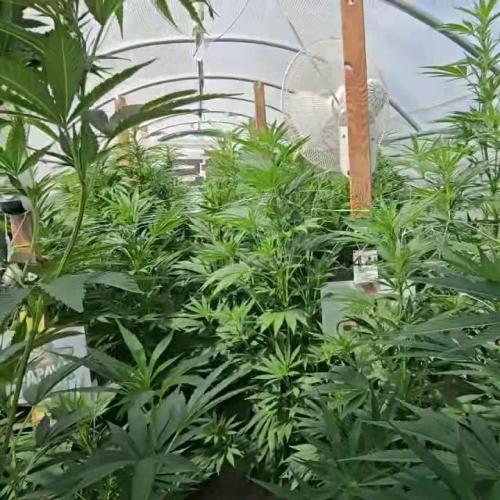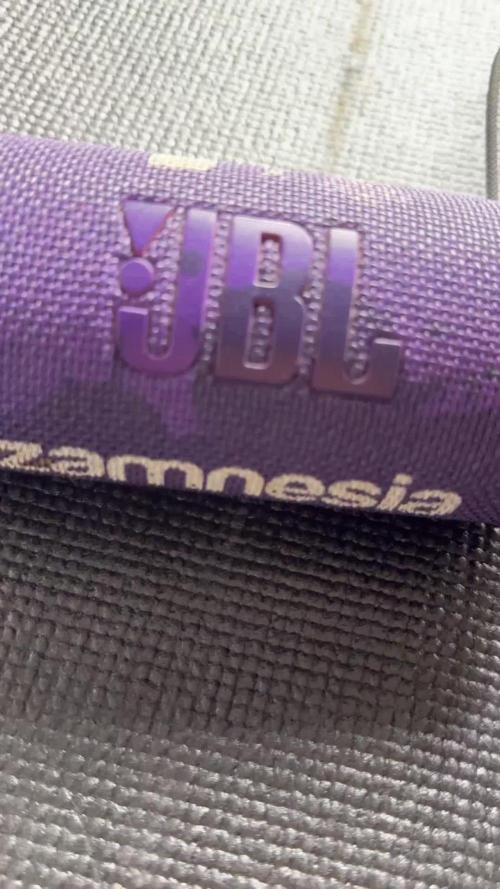The Grow Awards 2026 🏆 





































Likes
Comments
Share


@ROY4L_GU4RD
Follow
Week 6 here and I'm going back to the 6/9ml macro/bloom amount. What do yall think so far? A little over halfway at this point.
Likes
31
Share


@Mrs_Larimar
Follow
2024-07-29
Show must go on.
same for the Outdoor Tangerine SowF1 Fast.
I can see signs of Flowers, so next week she will be officially into Floweringstate too.
she stretched heavy and spreaded vertically like a folding Fan
super structure.
and the harvested Plant stands outdoors, too. i look if shes revegetating.
she gets water and attention.
BREEDER INFO
Tangerine Snow F1 Fast Feminised is a 75% sativa, four-way cross of (Boost x Tangelo) with (Lavender x Power Plant).
This Fast F1 hybrid is bred from Cali genetics and boasts great citrus terps, high resin production for extracts,
high levels of THC, very good yields and excellent mould resistance.
Tangerine Snow F1 Fast can be grown indoors as well as outdoors. Indoor flowering times are between 8 - 10 weeks
while harvest time in northern latitudes is during September while in the southern hemisphere growers will be harvesting during March.
Recommended climate regions are hot, dry, humid and warm. These are tall, semi-branched plants that grow in excess of 200cm
and display a high degree of vigour with very good uniformity.
In common with many other heavily sativa-dominant strains, Tangerine Snow F1 Fast offers excellent resistance to mould
as well as to plant pests and diseases. The combination of citrus terps and plenty of resin makes thi
a very good extract strain with the 'washing' method delivering very good yields of hash.
The citrus terpene profile is reminiscent of mandarins and tangerines and also has sweet candy notes.
THC production has been lab-verified at a strong 24% while CBD is low. The effect is uplifting and energising,
perfect for use during the day and early evening.
Likes
16
Share


@Chubbs
Follow
Wow, another week done. It's become an absolute jungle in my greenhouse. A few of the GG4/Sherbets tops had to be mainlined since they're hitting the top of the greenhouse at 7ft8in tall. The smell is definitely getting stronger every day and it goes from super pungent, to sweet, to almost tropical. They're all still looking nice and healthy. The Athena Blended Line works wonders with my well water as the plants couldn't be happier.
All in all Happy Growing.
Likes
54
Share


@Hou_Stone
Follow
I cleaned the roots this week with lots of tap water. The PPM drain was at 1100 and I lowered it to 550. Then I gave 1L of fertilized water at 850PPM to each plant. Then let it dry for 5 days
Green house Mineral fertilizers: : 0.5g booster PK+,0.5g Hybrids and 0.3g Calcium per liter
Lamp power of the week: 400w
--------------------------------------------------------
Grow Room: trafika urban hydroponics 100x100x200 cm
Lamp: kit trafika urban hydroponics ballast & lampe HPS : 250-600w
Extractor & carbon filter : Mars hydro 6 inch 402 CFM ( power 3/10 )
Soil : 20% perlite, 20% vermiculite, 60% universal soil
Average daily temperature & humidity : 24-30°C 40-60%
Average nigth temperature & humidity : 17-22°C & 50-70 %
Processing
Likes
21
Share


@Stick
Follow
She's not stretching as fast as the other plants in the room so I had to raise her container in order for the canopy to access to the light. Very compact with tight nodes. Not sure how this is going to end/yield, but we'll see!
Likes
19
Share


@clueless_smoker
Follow
17/01
So I have had serious doubts about my 300W CFL grow light since day 1 so I decided to instead opt for a Mars Hydro TS1000. Looking forward to seeing if there's any difference!
With regards to my previous grow question, my tap water, while drinkable tastes terrible and has a higher than normal amount of chlorine which i heard is terrible for plants. Hence the RO water. Got hit by a really cold spell last week and I struggled to keep the tent above 16 degrees C but it's starting to get back to normal now so hopefully will see some good growth :)
20/01
So I may have set her back by a couple of day's with the new light, apart from the apparent change in wavelength from CFL to led that can cause some stress I also gave her 100% on the dimmer. Just a quick note to any newbies out there, the Mars Hydro TS1000 gives you a recommended distance from the canopy for each stage of growth but not recommended power, if your girl is at my stage of growth use 25-30%.
On the bright side she has adapted nicely and no lasting damage seems to have been done. Seeing signs of growth all over and she's back to praying :)
23/01
She recovered from the change of light nicely! She's growing like a superstar now and just got her first feed today. Gonna take it easy on the nutrients, really don't wanna stress her out anymore. I have been turning up the light strength daily and she's currently happy at 50%.
Likes
53
Share


@cheetah844
Follow
I flipped them to flower this week, finally.
They are way behind schedule because I didn't have enough space to keep them on their own 12/12 light schedule so they had to stay on 18/6 along with the other plants in the same grow space. They've gotten much bigger than I wanted them to due to that. But I'm hoping if I do the female forced pollen process correctly that'll hopefully mean more seeds to share 😁.
I've been spraying the chosen males with colloidal silver for 3 days now. I take them outside to spray them & then let them fully dry before bringing them back in with the girls. Just a safety measure incase I mess up the forced female pollen process I'll still have good & untainted flower to use from the girls.
Likes
11
Share


@4_Pro2Bono_0
Follow
Everything after germination has been pretty smooth. The plants in veg had a couple small brown spots due to under watering but no extreme signs or any abnormalities.
Likes
26
Share


@GroloCup
Follow
Another solid week, I've upped the EC of the solution a bit to keep her going as she transitions into flower. Starting to get a sweet smell now and I see a few purple pistils mixed in as well. Things are about to get fun!
Likes
7
Share


@Drtomb
Follow
Finally about to begin the flushing stage. This will be a different go of things. Normally id run straight water for 3 weeks. This time ill be adding the Hydro Bio which contains benificial bacteria and. Microorganism, humic and fulvic acid as well as molasses and sea kelp. Hoping to finish with nice strong white healthy roots.
Likes
22
Share


@420DeepGrow
Follow
:
📆 Semana de Cosecha – Blue Zushi
La Blue Zushi llega al final de su ciclo con una presencia arrolladora. ✂️💎
Los tricomas están en su punto justo, con mayoría lechosa y toques ámbar que marcan el momento ideal. Los cogollos son duros, pesados y completamente nevados, con ese tono azulado que la convierte en una planta de escaparate.
El olor es profundo y embriagador, mezcla de cítricos dulces, kush cremoso y especias suaves que anticipan un perfil terpénico de categoría.
La resina habla sola: pegajosa, densa y presente incluso en las hojas más bajas.
Se corta en su mejor momento, tras semanas de mimo con XpertNutrients y el empuje final de Sticky Fingers, que ha redondeado la floración con una capa extra de calidad.
Blue Zushi al bote. Cultivo cerrado con broche de oro. 💚✂️
¡Cosechamos fuerte! 💪
Processing
Likes
25
Share


@BudHaks
Follow
She is getting fat! What a great plant she is - again, little to no deficiencies, other than some light burn but I could not complain to have such strong genetics for my first ever grow! Trichomes are not too cloudy, so still a while to go but what an AUTO!
Likes
14
Share


@StewartBloom
Follow
Okay so I'm trying something new, since I've gone away from a switch to water for the last week flush I harvested the tops and best smalls and packed the cannatrol full. I'm giving the under growth a bit more time to rippen before I harvest that for the the freezer. If this turns out to be a bad idea I'll not do it again in the future. The last long video is what's left in the tent right now. Let me know if any of you have experience doing this.
Updated with a bunch of pictured of dried and cured. Ended up with 186g of beautiful flower. 72g of untrimmed smalls I'll make into RSO, I have a lot of back and nerve pain and RSO hands down the only thing that brings me actual relive, I'm late to the party on this one but I set a side part of the grow for it now.
I let the under canopy and shorter tops go another 10 days feed at half strength and I'm glad I did, it ripened up nicely and definitely got a lot of color. I forgot to get pictures of that harvest but I will when I pull it from the freezer to wash. My test jar of this washed at 4+% (the last picture). Last update will be results of that wash.
Last update on this one, I added a couple hash/rosin pics at the end. She washed from plant to rosin at 4.03% the terps are musky skunk, sweet pastries, and fresh Linen. I'd definitely grow this one again.
Likes
11
Share


@Chubbs
Follow
420Fastbuds
FBT2303 Week 8
These twins are growing absolutely perfect. They are stacking up like floors on a building in my opinion. Really can't wait to see the upcoming weeks on how they'll fatten up. Over all they seem to be responding to the nutes every 3rd water so will keep up that routine for another week or two. I might decide to do a mild defoliation taking off some of the bigger fan leafs but will see. Over all Happy Growing
Likes
13
Share


@Hawkbo
Follow
Soaked 7.27 for 36ishhrs, into paper towel for 12 hrs then into a solo cup with greentree garden supply pro ultra (coco/perlite). First feed was a diluted leftover feed from my other auto youngins. Basically about 1 ml/g of grow, 7ml/g humid acid, 1ml/g more roots, 1ml/g orca, cannazyme, hydroguard and a sprinkle of living organics in the nutes and on the top of the coco. Usually the ppm will be higher than I want it so I just dilute with r/o water until I'm down to 200-250. It makes it so I cant be accurate on ratios so that's why I'm tellin ya, but it's how I always do it no matter what nutes I use. I started this, a pineapple express and mexican airlines cuz I had 2 slow growers from the first crop I germinated so I just ripped em out and started these in the same cups.
Likes
4
Share


@DogDoctorOfficial
Follow
GMO Cookies — Week 1 Report
Folder #5 | 12/12 From Seed
Medium & Setup
GMO Cookies is growing in PRO-MIX soil, planted directly in bags, under the same exact conditions as the rest of the run.
No exceptions, no special treatment — same environment, same light cycle, same airflow, same philosophy.
• Light cycle: 12/12 from seed
• Medium: PRO-MIX
• Feeding: Plagron recipe (early-stage, light and balanced)
• Watering: Gentle, consistent moisture — no saturation, no stress
⸻
Seedling Development & Observations
Week one shows a strong and expressive start.
Macro photography reveals a beautiful detail:
• The seed shell is still partially attached to one of the cotyledons (the first embryonic leaves — not true leaves yet).
• This is a completely natural stage and a great visual indicator of a healthy, recently emerged seedling.
The plant is now transitioning toward the second pair of true leaves:
• One leaf is longer and more stretched
• The other is rounder and slightly more compact
• Both show similar structure and texture, expressing early genetic personality
Growth is steady, upright, and confident, with no signs of stress. Stem posture and leaf color indicate a plant that is well-adjusted to its environment.
⸻
Overall Health
• Color: vibrant and clean
• Structure: balanced and stable
• Response to medium: excellent
• Response to light cycle: positive
Everything points to a very smooth early establishment phase.
⸻
What to Expect
• Continued leaf expansion over the coming days
• Full release of the cotyledons as energy shifts to true vegetative growth
• Increasing symmetry as the second node develops
• GMO Cookies beginning to express its characteristic vigor
What Not to Expect (Yet)
• No explosive vertical growth at this stage
• No feeding intensity increase
• No need for intervention — patience is key
⸻
Final Notes
GMO Cookies is settling in beautifully.
Strong emergence, clean structure, and healthy early development all suggest a solid foundation moving forward.
Week one is about observation — and this plant is already giving us plenty to enjoy.
FOR DISCOUNT CODES AND MORE JUST FOLLOW THE LINK https://website.beacons.ai/dogdoctorofficial
📲 Don’t forget to Subscribe and follow me on Instagram and YouTube @DogDoctorOfficial for exclusive content, real-time updates, and behind-the-scenes magic. We’ve got so much more coming, including transplanting and all the amazing techniques that go along with it. You won’t want to miss it.
GrowDiaries Journal: https://growdiaries.com/grower/dogdoctorofficial
Instagram: https://www.instagram.com/dogdoctorofficial/
YouTube: https://www.youtube.com/@dogdoctorofficial
⸻
Explore the Gear that Powers My Grow
If you’re curious about the tech I’m using, check out these links:
🔆 Lighting & Environmental Control
• Future of Grow — Advanced LED lighting technology
https://www.futureofgrow.com/
DISCOUNT CODE: DOG20
• Lumiflora — Under-canopy LED lighting
https://lumiflorade.com/
• TrollMaster — Environmental controllers and automation gear (past collaboration)
⸻
Genetics
• Zamnesia Seeds — Genetics used in this project
https://www.zamnesia.com/
⸻
🌱 Soil, Substrates, Boosters & Root Support
• Plagron — Substrates, bio mixes, and supportive products
https://plagron.com/en/
⸻
🎒 Storage, Curing & Preservation
• Grove Bags — Curing and storage solutions
https://grovebags.com/
⸻
📸 Photography Equipment & Tools
(Not sponsors, but part of my creative toolkit)
• Sony A6000 / Sony A6700
• Sony full-frame macro lens + few more
• Stacking photography workflow - learning
• iPhone (for behind-the-scenes shots)
We’ve got much more coming as we move through the grow cycles. Trust me, you won’t want to miss the next steps, let’s push the boundaries of indoor horticulture together!
As always, this is shared for educational purposes, aiming to spread understanding and appreciation for this plant. Let’s celebrate it responsibly and continue to learn and grow together.
With true love comes happiness. Always believe in yourself, and always do things expecting nothing and with an open heart. Be a giver, and the universe will give back in ways you could never imagine.
💚 Growers love to all 💚
📸 P.S. – The Eye Behind the Lens
All photos in this diary (for now — except for the ones showing the camera, which I took with an iPhone) are taken with a Sony A6000 (for now A6700 will be doing all future updates) paired with a Sony full-frame macro lens and a few more.
Photography is part of the story — it’s how we share the fine textures, the glow, and the quiet details that words can’t always capture.
I’ve also started experimenting with photo stacking — a technique where multiple images, each taken at a slightly different focus point, are layered together to create one perfectly sharp image from front to back.
It’s not digital enhancement or AI; it’s pure photography — a way to reveal the plant’s beauty in microscopic depth, from trichome to petal.
You’ll even see a few shots of "ghost me" capturing the shots — camera, lens, setup — because every grow deserves not just to be cultivated, but documented like art.
FOR DISCOUNT CODES AND MORE JUST FOLLOW THE LINK https://website.beacons.ai/dogdoctorofficial
NEW DISCORD - Official Server Invite Link : https://discord.gg/ksjAkA5T74
Likes
Comments
Share


@Weedwithwes
Follow
Only had a 7 day dry. Lots of fluctuations in humidity as setup was not complete during time of harvest.
Likes
11
Share


@TheMadHasher
Follow
This week the ladies got topped at about 5 node spaces. They’re loving the nutrients and the light! I plan on starting the flowering process in about a week!
Likes
59
Share


@Insaniac_0
Follow
Week 8 Day 49 to harvest
P1 harvest was flower day 53 - total wet weight was 24oz and the stem base accounted for 8.0oz, so about 16oz set to dry.
I fed P1 half nute flush water again this week. Feed this week was 1.25 gallons 1 time. I used 400ppm Bloom concentrate mix (recipe week 5). However, I also added .5ml/gal of CaliMagic (General Hydroponics 1-0-0) and 7ml of Roots Organics HP2 (Aurora Innovations 0-4-0). PH balance this week was 6.3. And then cut her down 4 days later.
P2 harvest was flower day 49 - total wet weight was 16.3oz and the stem base accounted for 6.4oz so about 9.9oz set to dry. (reminder that P2 was the test plant where I broke the main stem and later another later topping from an off branch already topped.) The test resulted in smaller colas in the later topping and the first topping break recovered surprisingly well with colas equal to the biggest. However the later break after the last topping resulted in the smallest cola. This tells me that any damage survived early can see a full recovery but later ones may cost yield.
Since P2 looked mostly ready to harvest I decided to dry out after the first feed this week.
I will update with cure and smoke details later.
















